How to Install Microsoft Windows Server 2003
Install Microsoft Windows Server 2003 by booting your server from installation media, creating and formatting a partition, and following setup prompts to configure system settings. Enter your product key and network details to complete the installation and enable server functions.
🤖AI Overview:
Installing Microsoft Windows Server 2003 involves preparing the server, partitioning and formatting the hard drive, entering the product key, and configuring network and administrator settings. The OS provides essential server capabilities including security and administrative tools for managing networks and applications.
What is Microsoft Windows Server 2003
The platform to build an infrastructure of connected applications, networks, and web services is called Windows Server. Windows Server 2003 has four editions: Standard, Enterprise, Datacenter, and Web. It is designed to distribute resources among many users and offer granular administrative control over corporate networks, applications, and data storage. Millions of customers use Windows Server File Servers to store and retrieve billions of files on a built-in scale. The operating system comes with built-in security, quotas, backup, replication, and recovery features.
With the release of Windows Server 2003, Microsoft introduced server roles, allowing administrators to designate a server with a particular function, such as a domain controller or DNS server. Additional new features in this update were increased Network Address Translation (NAT) compatibility, built-in firewall capabilities, expanded encryption functionality, and Volume Shadow Copy Service. So, you can install Windows Server to use these features.
Prerequisites to Install Windows Server
To create a network that multiple computers can access, you can install Windows Server. Depending on your needs, there are various ways to install Microsoft Windows Server. It can be set up on a real server, a virtual one, or a cloud.
Make sure your computer satisfies the hardware minimums. (512 MB-2 GB for Server with Desktop Experience installation option).
First, purchase dedicated server to install Windows Server on it, and then follow the below instructions and screenshots to install Windows Server 2003 on the computer you prefer to be your server machine.
Easiest Method to Install Microsoft Windows Server 2003
Let’s go through the steps of this guide to learn How to Install Microsoft Windows Server 2003 on your purchased server. In the end, you will also know how to install Windows 2003 Server on a PC.
Step 1. Preparing to Install
Boot your server to let the files and drives be loaded.
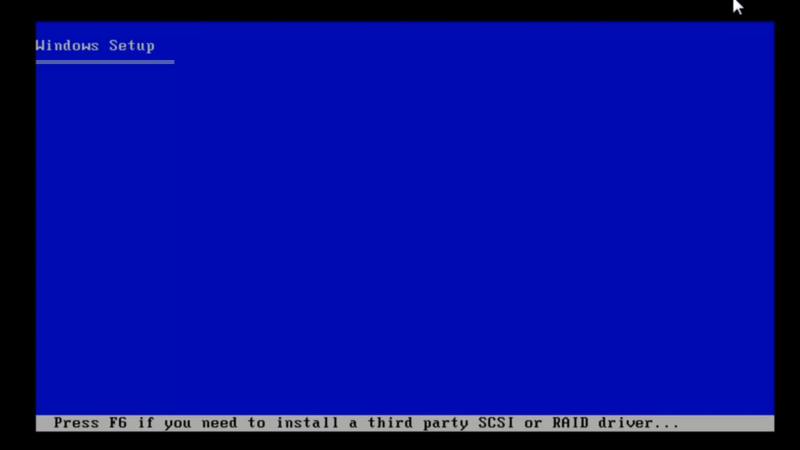
Step 2. Set up Windows Server 2003
Once the Windows Setup screen is displayed, press Enter button to view the “Welcome to Setup” message.
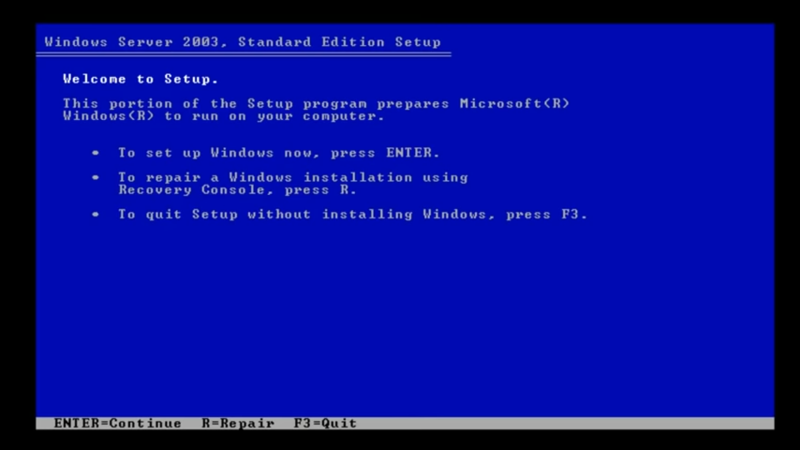
After reading the Windows Licensing Agreement, press “F8” to accept the conditions and move on to the following screen.
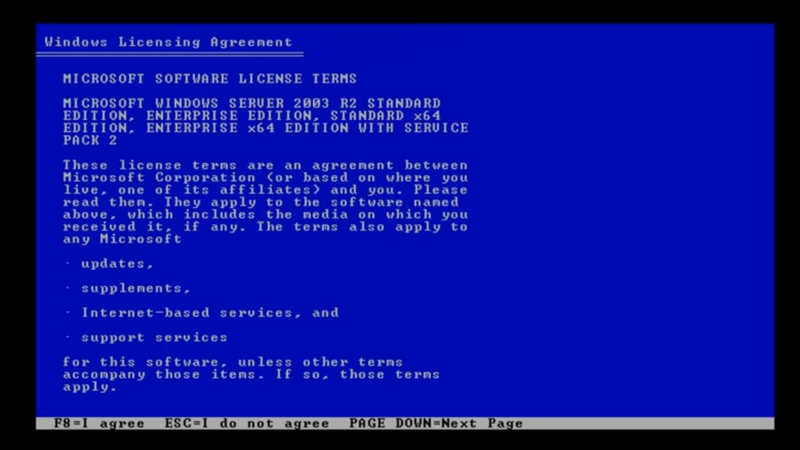
Step 3. Create New Partition
On your hard drive, create the partition where Windows Server 2003 will be installed. Use the “C” key to select “Unpartitioned space”. Enter how much of the HDD you want to divide. To use the entire disk, enter the same value that is displayed next to “The maximum size for the new partition.” On the following screen, press “Enter” one more to confirm your drive selection.
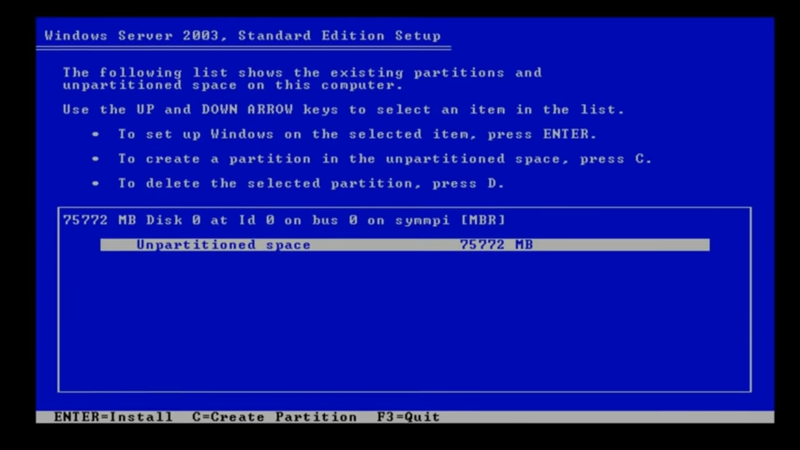
Step 4. Format the Newly Partition
With the arrows, select “Format the partition using the NTSF file system.” Press “Enter” to continue. Watch as the drive is formatted by the installer. Allow the installer to copy the Windows Server 2003 files to your hard drive and then wait.
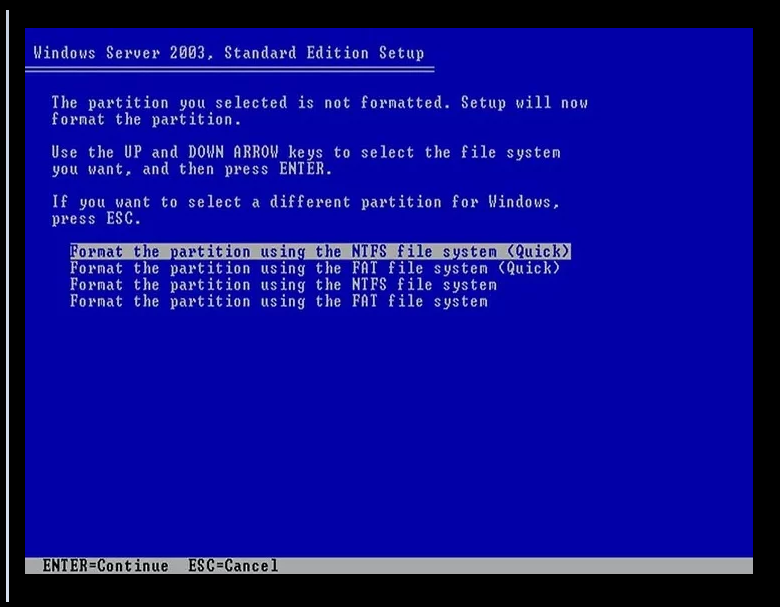
You may monitor the development of each of these processes using a yellow progress indicator.
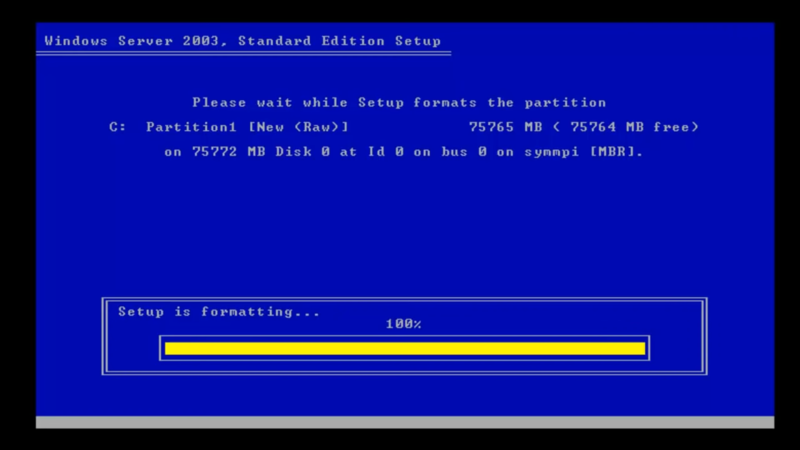
Then, wait while setup copy files to the Windows installation folders.
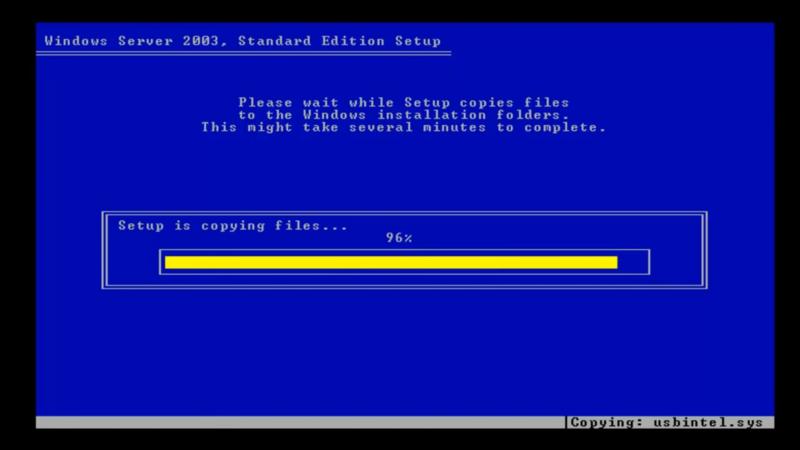
After the installation is finished, press “Enter” to restart your computer.
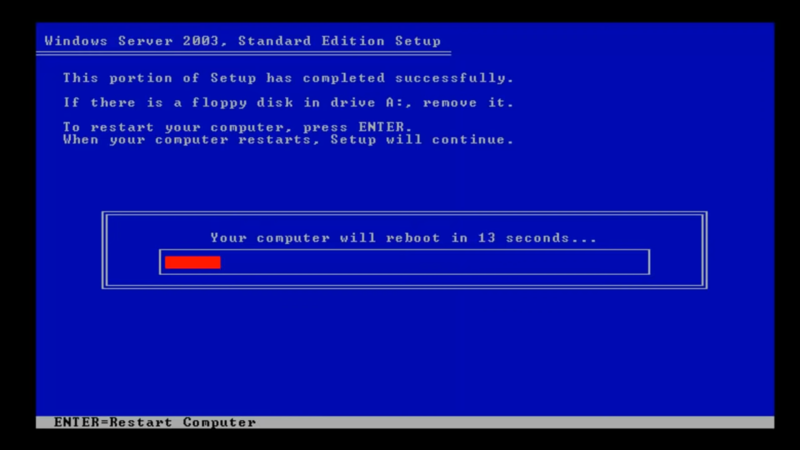
Step 5. Rebooting Installation
Rebooting the installation process loads a GUI mode phase.
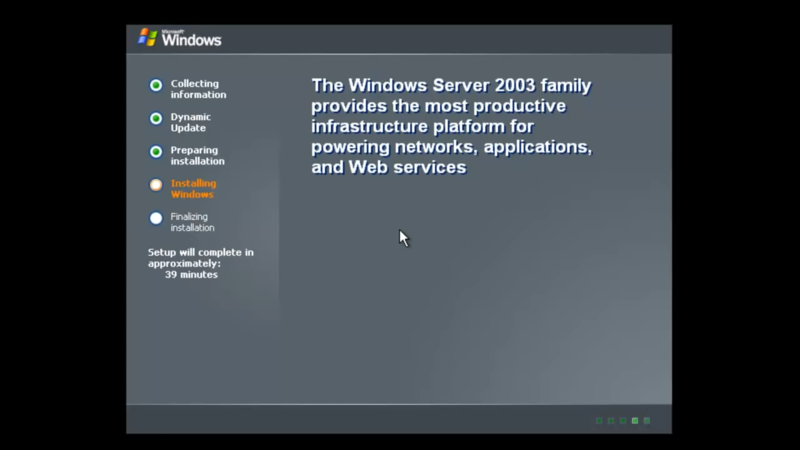
Step 6. Regional and Language Options
Customize Windows for your target region and preferred language.
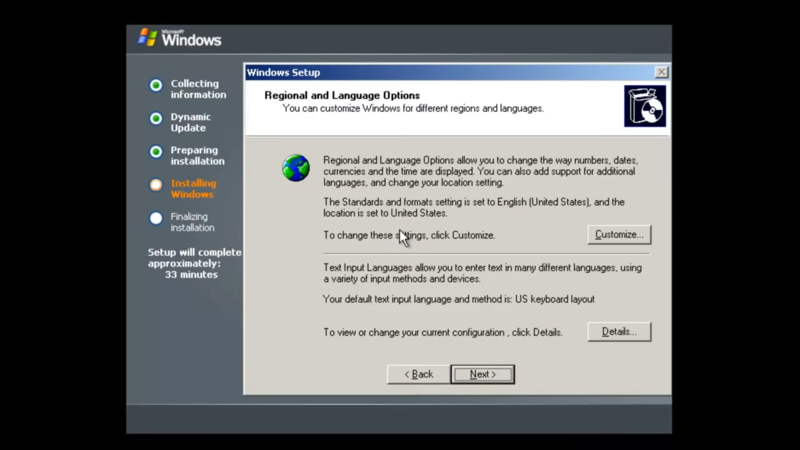
Step 7. Personalize Your Software
To personalize your software, enter your name and the name of your organization or company and click ”Next”.
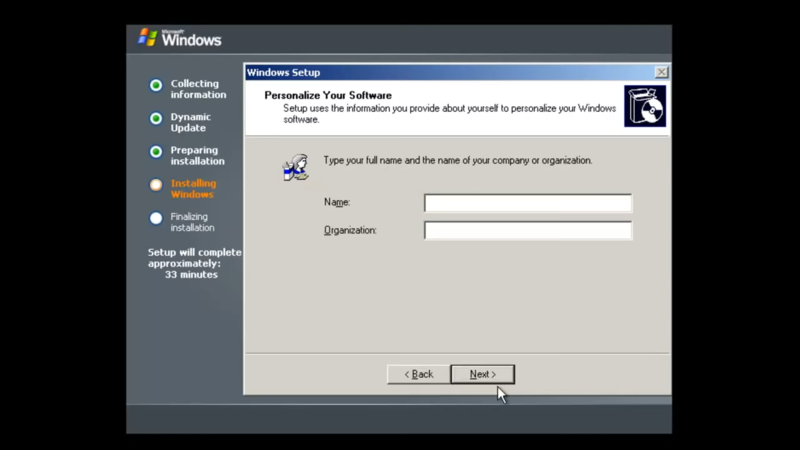
Step 8. Product Key
Insert your product key and click “Next”.
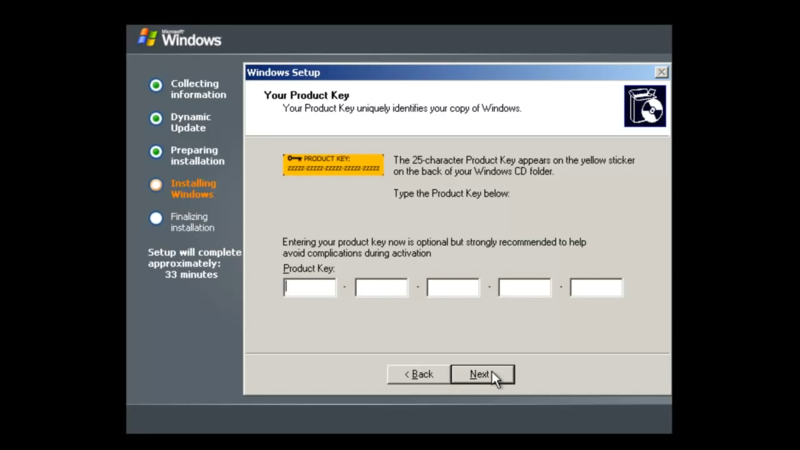
Step 9. Windows Server Licensing Modes
Enter the type and number of acquired licenses. Select “Per server” from the radio buttons and type the number of connections you’ll require to your server. Press “Next.”
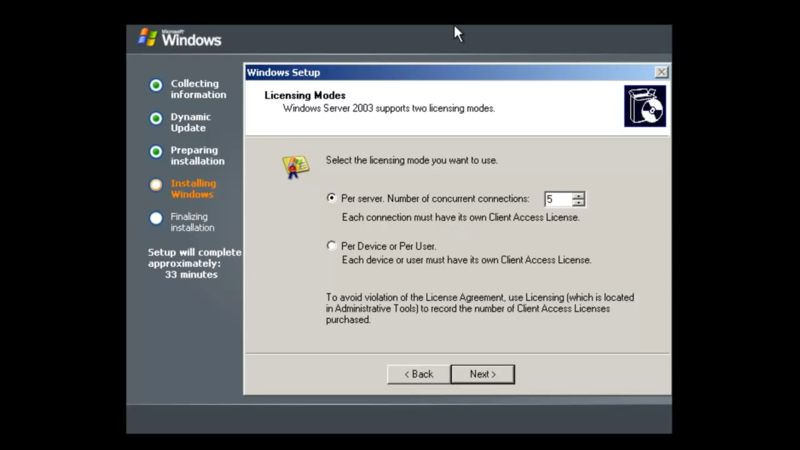
Step 10. Computer Name & Administrator Password
You have just a few more steps to install Microsoft Windows Server 2003. In this step, type your computer name and an administrator password that you have already chosen. If you wish to host a website, SMTP server, POP3 server, etc., it’s vital to change the name of the computer. Then, select “Next” and continue.
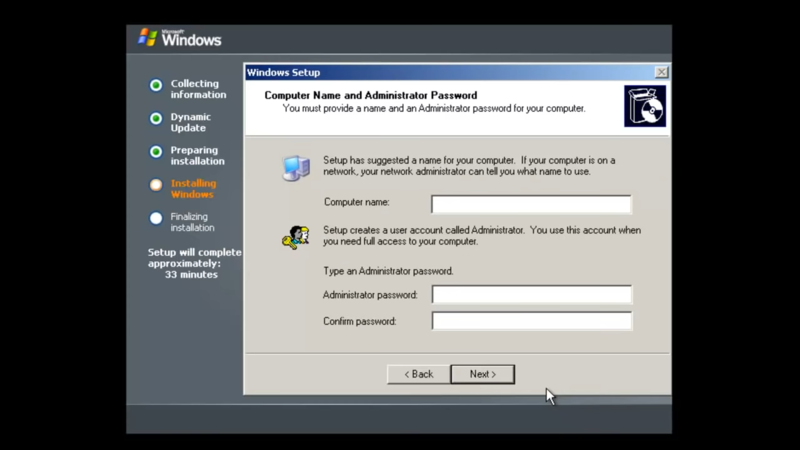
Step 11. Date & Time Settings
Choose your considered Date and Time and click the ‘’Next’’ button.
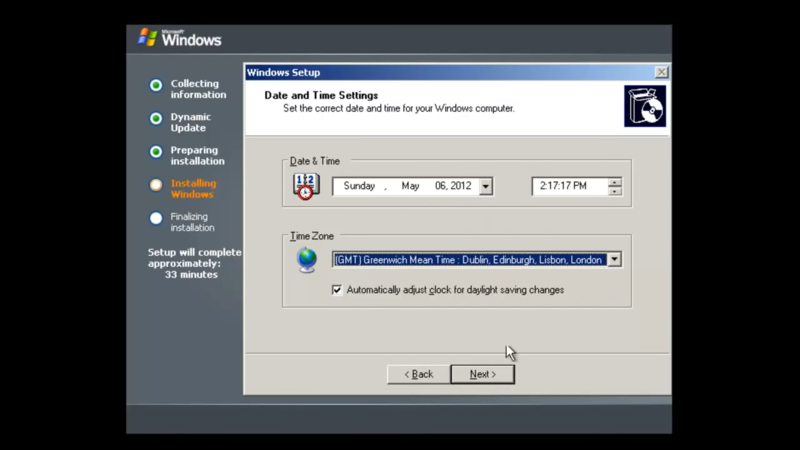
Step 12. Configure Network Settings
By selecting “Custom settings” and then “Next” on the “Network Settings” screen, you can configure your network settings. Select “Internet Protocol (TCP/IP)” and then “Properties.” If you are unsure of your IP address, pick “Obtain an IP address automatically” or “Use the following IP address” and type your IP address in the text box. Click “OK” before selecting “Next.”
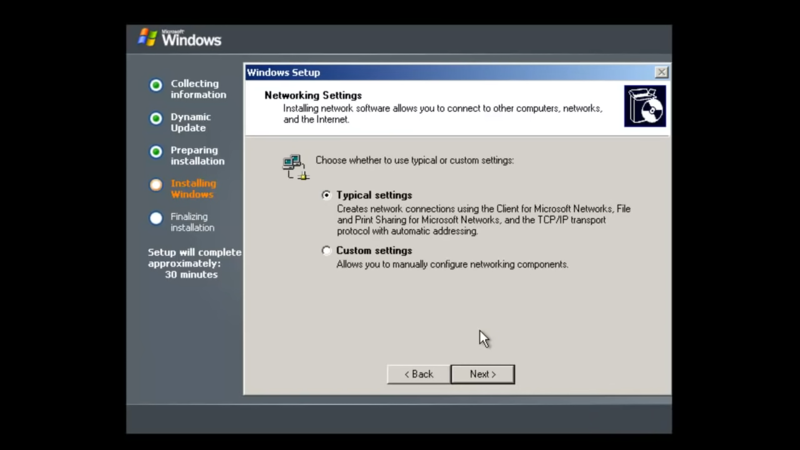
Step 13. Default Workgroup
When you see the “Workgroup or Computer Domain” page, leave the “No” checkbox selected and press “Next” Watch while the installation procedure goes on.
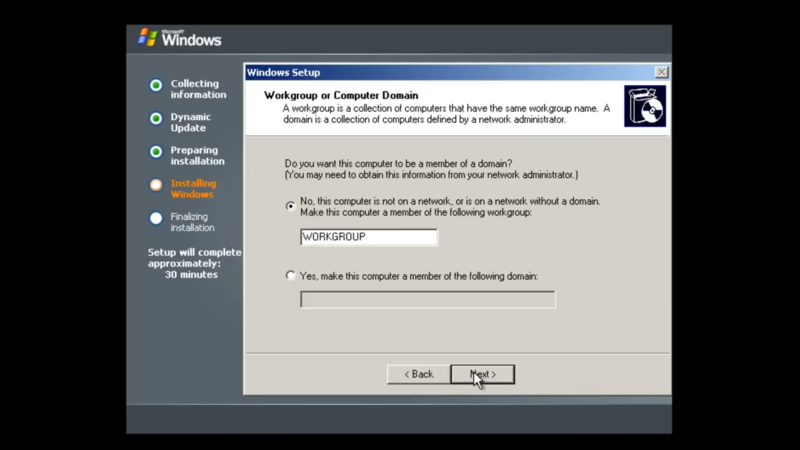
Step 14. Complete Setup
As you reviewed, it was not complex to install Windows Server 2003. After setup, the computer boots up. Press Ctrl+Alt+Del.
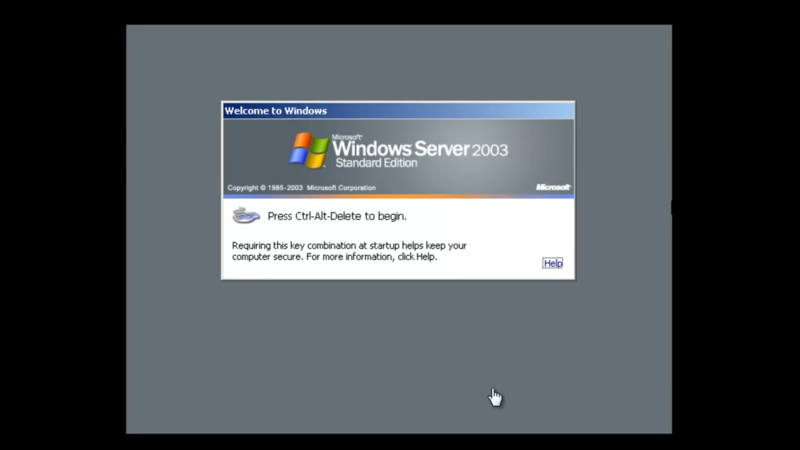
Step 15. Log in to Windows
For the latest step to Install Microsoft Windows Server 2003, log in by typing your username and password.
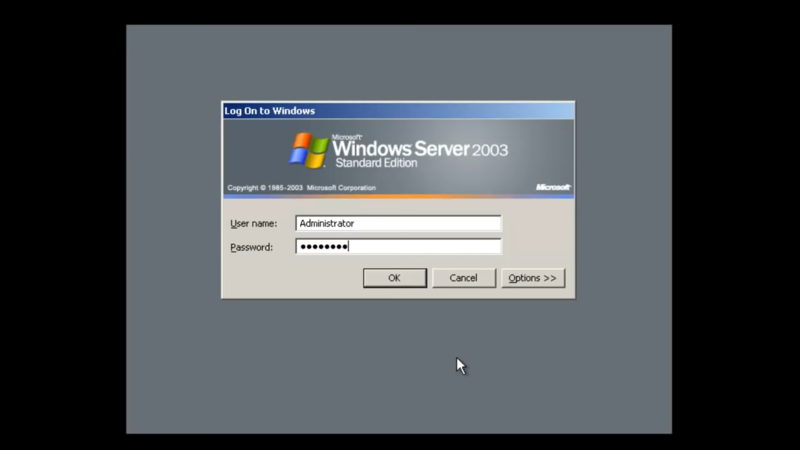
Once the installer restarts your computer, your installation will be finished.
Best Way to Install Windows Server 2003 on a Computer
As we mentioned, a Dedicated server is a requirement for installing Windows Server. Since the support team of your provider does not install Windows Server 2003, you need to use virtual machines such as esxi or kvm.
Installing Windows Server on a PC also requires a virtual machine which seems difficult for many users. So, what is the OperaVPS team’s suggestion? You can easily buy Windows VPS with a pre-installed Windows Server 2003 to not have to do all the required steps of installation and manage the long process of installation.
Conclusion
To install Microsoft Windows Server 2003 successfully requires thorough preparation, careful adherence to setup procedures, and comprehensive post-installation configuration. Despite its age, Windows Server 2003 remains critical for some enterprises running legacy systems, and following this guide will help maintain a stable, secure server environment tailored to your business needs.
FAQ
2. Which editions of Windows Server 2003 are available for installation?
Windows Server 2003 comes in four editions: Standard, Enterprise, Datacenter, and Web. Each edition offers different features tailored for various business needs.
3. Can I install Microsoft Windows Server 2003 on a virtual machine?
Yes, installation on virtual machines such as ESXi or KVM is supported, which can be beneficial for testing or smaller-scale deployments.
4. What steps are involved in setting up Windows Server 2003 after installation?
After the initial installation files copy and partition formatting, the setup includes configuring regional settings, entering product keys, setting up network protocols, and completing licensing information.
5. How do I configure network settings during the installation of Windows Server 2003?
During setup, choose custom network settings to configure TCP/IP properties. You can set a static IP address or enable automatic IP acquisition depending on your network design.
6. Is a dedicated server necessary for installing Microsoft Windows Server 2003?
While it is recommended to use a dedicated server for optimal performance, installation on a personal computer is possible with the use of a virtual machine environment.
7. How do I manage licensing for Microsoft Windows Server 2003?
You must enter the product key during installation and select the appropriate licensing mode, such as per server connection licenses, matching the number of users accessing the server.
8. Are there easier alternatives to installing Windows Server 2003 myself?
Yes, purchasing a Windows VPS with Windows Server 2003 pre-installed offers a hassle-free option, avoiding the complex installation process.
9. What are the security features included in Windows Server 2003 after installation?
Windows Server 2003 includes built-in firewall capabilities, encryption functionality, access quotas, backup, replication, and recovery features to secure your server environment.
10. Where can I get support if I encounter issues while installing Microsoft Windows Server 2003?
If difficulties arise during installation, contacting technical support services with expertise in Windows Server 2003 is recommended to resolve errors efficiently.